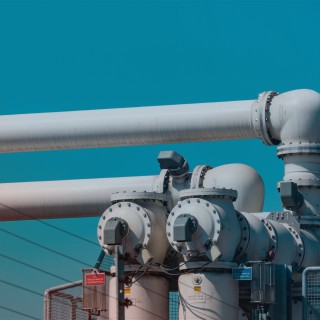Lack of transformation hikes energy prices, not climate policy
Insights
A recent information campaign led by energy companies and echoed by politicians, suggests that CO2 accounts for as much as 60% of the electricity cost. This message creates an impression that the cost of buying allowances amounts to 60 percent of the end users’ electricity bill. But this is not the case. It does a great deal of harm - it distracts attention from the fundamental problems of the Polish energy sector. It distances us from solutions that can effectively stop price increases. In this article - on the basis of adopted assumptions (presented in the annex) we present, among others, what energy prices for households are actually made of.

The situation in the energy sector is extremely difficult. No one expected the coronavirus pandemic, such a rapid economic recovery, and Gazprom's actions, which contribute to record-high gas prices. Putting out the fire with petrol and the lack of real solutions aimed at reducing energy costs in the coming months and years will only exacerbate the problem. In reality, we are facing ageing power plants, one of the highest coal dependencies in the world, and insufficient low-carbon investment. Instead of planning to modernise the sector, the discussion is focused on 'who’s to blame’ and how to opt out of the EU ETS. This is a road to nowhere.
Main conclusions
- Had Poland started reducing emissions and diversifying its energy mix earlier on, today’s consumers would be paying less. EU’s climate policy has been around since 2005 and at the UN since 1992.
- A discussion on the reform of the EU Emissions Trading System has begun. It is important for Poland to present realistic proposals and then build alliances with other countries.
- A number of factors are responsible for the current increase in electricity prices: increased demand for energy, rising costs of fossil fuels (mainly gas) and CO2 allowances, as well as increased margins for power producers.
- If we include all components of the energy bill, the cost of CO2 for a household in 2022 will be no more than 23%.
- Increasing proceeds from the sale of CO2 provide additional revenue for the state budget. This provides opportunities for the government to, for example, reduce the VAT.
- The Polish energy sector needs investments in zero-emission sources that do not generate costs of emissions - their development is too slow. This will reduce wholesale energy prices in the long term.
- We pay for coal many times over by: supporting coal-fired power plants in the capacity market, subsidizing the mining industry, paying for CO2 emission allowances and other environmental costs.
- Even if Poland could opt out of the ETS (which it can’t without leaving the EU) - the problems of the power and heating sectors will remain. High emissions, ageing power plants, underdeveloped grids, little diversification of generation sources - these are the structural challenges of the Polish power sector that we have to cope with anyway.
What is it that we pay for in our electricity bill?
The electricity bill consists of a number of elements. More than half of it is the cost of electricity - mainly the cost of fuel and CO2 emissions.
Another part, accounting for one-third of the bill, are distribution fees - mainly for the use of the power grid. The bill also includes other charges resulting from investment support, e.g. the co-generation charge (0.5%) or the RES charge (0.1%), or from old commitments (termination of long-term contracts) - the so-called transitional charge. A new component, the power market fee, is paid to power plants for being in the system. This is over 6% of the bill.
A significant item is the tax burden - VAT, which in previous years was 23%, and excise duty of 5 PLN/MWh. As part of the so-called inflation shield, the government abolished the excise duty and reduced VAT 5%[1].
Our calculations show that the average cost of CO2 is about 23% of the total electricity bill in the G11 tariff. The assumptions, methodology and data sources for these calculations can be found in the annex.
How prices have changed for households
Electricity prices for households have remained relatively low over the years as a result of few investments in the power sector (postponing key decisions), low CO2 prices and tariff policies implemented by the Energy Regulatory Office. From 2020, electricity bills for group G started to increase (although less than the prices for businesses on the wholesale market). In 2019, the cost of purchasing 1 kWh for a household was 0,60 PLN/kWh, and two years later it was already 0,72 PLN/kWh. If the VAT rate were to remain at 23%, average prices for households in 2022 would reach 89 gr. per 1 kWh.
The price increase is due to increased demand, electricity generation costs (e.g. gas and coal prices), CO2 costs and costs of support schemes (e.g. power and co-generation fee) and increased network[2] rates.
The government has the tools to lower prices for households
The emissions trading scheme operates at the EU level, but revenues from the sale of allowances feed into the national budget. High prices have resulted in record inflows to the Polish budget - they have grown rapidly in recent years. In 2019-2021 they amounted to respectively. PLN 11, 14 and 25,5 billion.
The ETS puts a price on external costs of emissions - that is, the impact on the environment. This is one of the basic principles of environmental protection – that the polluter pays. Without putting a price on the costs of emissions, the market does not give the right price signals. Polluters then continue to profit from polluting, imposing external costs on society as a whole, regardless of who uses what source of energy and how they contribute to climate change. This is socially unjust, especially as the costs accumulate over time[3].
The ETS system generates revenues which provide an opportunity to reduce other burdens imposed on the price of electricity. The VAT rate was reduced from 23% to 5% and the excise tax from 5 to 0 PLN/MWh. The growing revenue from CO2 replaces other budget revenues and creates additional opportunities to intervene on household pricing, alleviate energy poverty and invest in emissions reductions.
Summary
For many years, energy prices remained relatively low. Utilities avoided difficult investment decisions and the cost of carbon emissions was not high. We benefited from running old coal-fired power plants, although it is well known that without investment and modernization, every industry loses its competitiveness. Now, several factors have overlapped - years of neglect and the global energy crisis. The sudden change in external conditions has resulted in incorrect conclusions being drawn - which are probably of short-term political benefit. The impression is being created that, in view of the situation, we can fail to transform ourselves and return to the old energy model. That is a road that leads nowhere. Only a modern, competitive and low-emission energy sector will help Poland reduce its energy costs. Lack of transformation, not climate policy, will drive up energy prices.
Authors: Tobiasz Adamczewski, Marcin Dusiło
Cooperation: Dr Joanna Maćkowiak-Pandera, Dr Aleksandra Gawlikowska-Fyk
Date of publication: 4.02.2022
Annex - how we calculate the price components
Energy prices for households vary depending on the retailer and tariff type, e.g. G11 or G12. For the purpose of this analysis, we take into account the average G11 tariff of a PGE customer from Warsaw. The share of CO2 costs in the bill is the amount of energy consumed multiplied by its emission factor and the CO2 price. Below are the detailed assumptions and sources used for our calculations:
1. End-user infromation:
- Annual household electricity consumption was 2225.7 kWh in 2014[4], 2173.4 kWh[5] in 2015-2017 and from 2018: 2375.1 kWh
- Customer of PGE Obrót[6], served by PGE Dystrybucja (Warsaw Branch) [7]
- Six-month billing based on the G11 tariff
- 1-phase system
2. Cost of CO2 for year Y
- The cost of CO2 for a given year is multiplied by the CO2 emission factor in year Y and the weighted average price of CO2 emission allowances[8] (for stationary emitters on the primary market) in year Y-1, converted from EUR into PLN using the average exchange rates of the EUR/PLN[9] pair in year Y
3. The CO2 emission factor
- For 2014-2020: the CO2 emission factor for electricity end-users from KOBIZE reports
- In 2021, the factor was calculated by dividing annual CO2 emissions from combustion[10] sources with total electricity production[11], increased by a historical correction factor for e.g. grid losses. The estimated CO2 emissions in 2021 result from the technology-specific benchmarks adopted in the Energy Forum.
- CO2 emission factor for 2022 assumed at 2021 level
4. VAT rate
- For the period 2014-2021 at 23%
- Under the anti-inflation shield up to 5%31.07.2022[12], then 23%
5. Excise duty rate
- For the years 2014-2018: 20 PLN/MWh, in 2019-2021: 5 PLN/MWh
- With the anti-inflation shield up to 31.05.2022[13] 0 PLN/MWh, later 5 PLN/MWh
[1] The VAT reduction applies until the end of July and zero excise duty until the end of May 2022. https://www.gov.pl/web/uw-podlaski/tarcza-antyinflacyjna-20--zdecydowane-dzialania-rzadu-przeciw-skutkom-inflacji
[2] https://www.ure.gov.pl/pl/urzad/informacje-ogolne/aktualnosci/9963,Od-stycznia-za-prad-zaplacimy-o-21-zl-wiecej.html
[3] We wrote about how the ETS works here: https://www.forum-energii.eu/pl/blog/ets-reforma
[4] Energy Consumption in Households in 2012, CSO: https://stat.gov.pl/obszary-tematyczne/srodowisko-energia/energia/zuzycie-energii-w-gospodarstwach-domowych-w-2012-r-,2,2.html
[5] Energy consumption in households in 2015. , CSO: https://stat.gov.pl/obszary-tematyczne/srodowisko-energia/energia/zuzycie-energii-w-gospodarstwach-domowych-w-2015-r-,2,3.html
[6] Tariffs for the year published on the ERO website: https://bip.ure.gov.pl/bip/taryfy-i-inne-decyzje-b/energia-elektryczna
[7] Fares until 2016: https://pgedystrybucja.pl/strefa-klienta/informacje-dla-konsumenta/taryfy-i-cenniki
ariffs before 2016. : published on the website of URE https://bip.ure.gov.pl/bip/taryfy-i-inne-decyzje-b/energia-elektryczna
[8] Annual reports of EUA auctions on EEX primary market: https://www.eex.com/en/downloads#%7B "downloads-container_0"%3A%7B "searchTerm"%3A "eua"%2C "type"%3A "Market%20Data"%7D%7D
9] NBP average exchange rate archive: https://www.nbp.pl/home.aspx?f=/kursy/arch_a.html
10] Emissions calculated on the basis of the annual electricity production of the technology and the emission factors estimated by the Forum Energii
[11] Transparency platform ENTSO-E: https://transparency.entsoe.eu/generation/r2/actualGenerationPerProductionType/show
12] https://www.gov.pl/web/kas/nizsza-akcyza-na-prad-i-paliwa-nizszy-vat-na-gaz-ziemny-oraz-energie-elektryczna-i-cieplna
13] https://isap.sejm.gov.pl/isap.nsf/DocDetails.xsp?id=WDU20210002350

